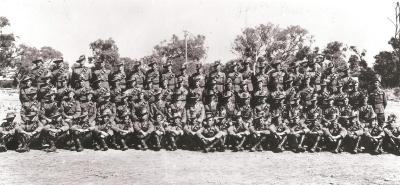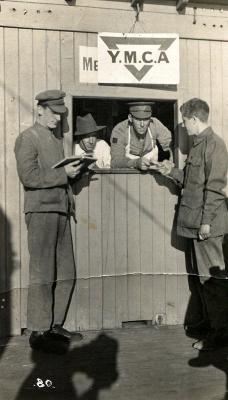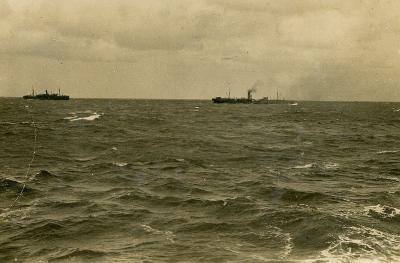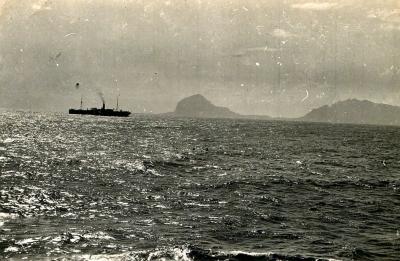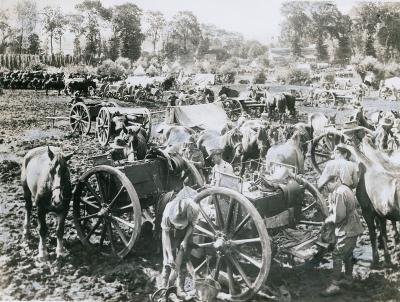German 10.5 cm Field Gun leFH 16
This weapon is an example of the 10.5 cm light field howitzer leFH 16. This particular gun was manufactured by Fried. Krupp of Essen although they were also manufactured by Rheinmetall. It fired a projectile with a weight of 15.7 kgs to a maximum range of 10.2 kms. At the end of the World War One, 13,004 of these guns were still in use as the standard equipment for German divisional artillery units. This particular gun, No 3120, K26, was captured by C Troop, commanded by Lt FJ MacGregor, MC of C Squadron. The incident relating to its capture is described “Westralian Cavalry in the War”, Chapter XXVII.
The series of actions designated the Third Battle of Gaza was fought in early November 1917 between British and Ottoman forces during the Sinai and Palestine Campaign. The Battle came after the British Egyptian Expeditionary Force (EEF) victory at the Battle of Beersheba on 31 October had ended the stalemate in Southern Palestine. The fighting marked the launch of Southern Palestine Offensive, By 10 November, the Gaza-to-Beersheba line had been broken and the Ottoman Army began to withdraw.
The 10th Australian Light Horse Regiment was part of the pursuit force trying to cut off the retiring Ottomans. Advancing forces were stopped by a strong rear guard of Turkish, Austrian and German artillery, infantry and machine guns on a ridge of high ground south of Huj, a village 15 km north east of Gaza. The defensive position was overcome late on 8 November, at high cost, by a cavalry charge by the Worcestershire and Warwickshire Yeomanry. Exploitation by the 10th Light Horse on 9 November captured several more artillery pieces which were marked “Captured by 10 LH” .
Details
Details
Without motive power (oxen, horses or trucks), artillery weapons could not be moved and were vulnerable to capture. Captured guns were visible evidence of a successful operation and rapid advance. Marking the trophy with the unit name ensured proper attribution of the feat of arms.
The Australian War Records Section (AWRS), established in May 1917, by the end of 1917, controlled the administration of war trophies captured by Australian units. Items were to be clearly labelled, contain the name of the unit that had captured the item, the town or area it was from, the time and place the item was found or captured, and the unit’s wish for its ultimate disposal. After the Armistice, it was agreed that artillery trophies (seemingly requiring little protection from the weather) were to be allocated to towns, as war trophies and memorials based on population and enlistment record. Once delivered, they became a local responsibility.
Designated as K 26 in Australian War Memorial records, battle damage to the gun was recorded to the trail, shield and barrel although the general condition on arrival was good. Because of the details of its capture, the gun was allocated to the City of Perth and was displayed for many years at the 10th Australian Light Horse Regiment Memorial in Kings Park.
In its location by the Memorial, vandalism was slight but over the decades, the gun’s condition was allowed to gradually deteriorate. It was eventually removed to 10 Light Horse lines in Karrakatta where it deteriorated further, to a stage where the trail had virtually collapsed. The gun was removed from display and hidden from view although conservation work was conducted on the wheels. The gun was transferred to the Army Museum in 2014 and after interim remedial measures was placed in its present location. Funding for stabilisation and remedial conservation continues to be actively sought.
Open in Google Maps
Nearest geotagged records:
- 2 Pounder Anti-tank Gun (0.01km away)
- World War 2, Australia, Western Australia, Fremantle, Artillery Barracks, 1939 (0.01km away)
- Vietnam Era, Australia, Western Australia, Fremantle, Artillery Barracks, 1969 (0.01km away)
- 10 Light Horse Regiment - Guidon (1928 Presentation) (0.01km away)
- 11th Battalion (The City of Perth Regiment) - Queen's Colour (1920 Presentation) (0.01km away)
- 11th Battalion (The City of Perth Regiment) - Regimental Colour (1929 Presentation) (0.01km away)
- 1st Battalion, 11th Australian Infantry Regiment (Perth Regiment) - King's Banner (1911 Presentation) (0.01km away)
- 16th Battalion (The Cameron Highlanders of Western Australia) - Queen's Colour (1951 Presentation) (0.01km away)
- 16th Battalion (The Cameron Highlanders of Western Australia) - Regimental Colour (1952 Presentation) (0.01km away)
- 44th Battalion (The West Australian Rifles) - Queen's Colour (Initial Presentation 1920) (0.01km away)
View all geotagged records...
Australian Army Museum of Western Australia
Australian Army Museum of Western Australia
Other items from Australian Army Museum of Western Australia
- Vickers Medium Machine Gun (MMG)
- MG 08 Machine Gun and Sight
- "Big Bertha" 70 Ton Press from Sheridan's badges
- Water Displacement 40 (WD-40)
- World War 2, Australia Western Australia, 10 Australian Light Horse, 1940
- World War 2, Australia Western Australia, 16 Battalion, CHAPPELL, 1940
- World War 1, Australia Victoria Melbourne, RILEY, Chaplaincy, 1917
- World War 1, Europe, RILEY, Chaplaincy, 1917
- World War 1, Europe, RILEY, Chaplaincy, 1917
- World War 1, Africa Mauritius Island , RILEY, Chaplaincy, 1917
- World War 1,Europe, 1918
- World War 1, Middle East Egypt, 12 Battalion, 1916

Scan this QR code to open this page on your phone ->





